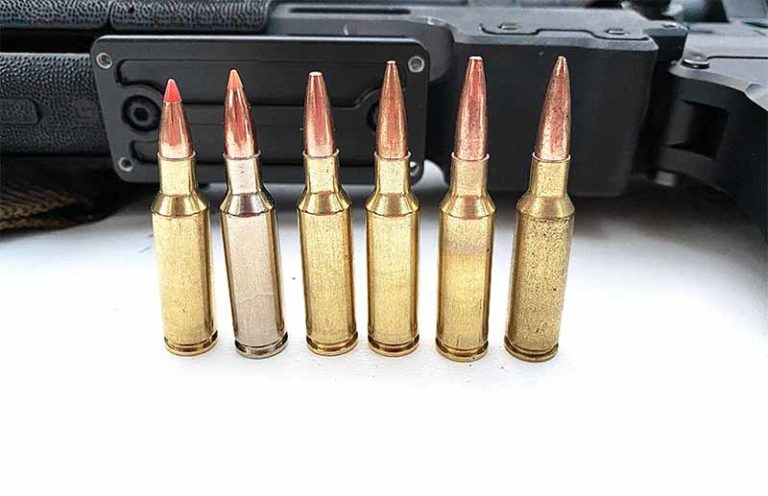
A NATO standard since 1980, will 5.56 continue to reign supreme or can it be usurped by .224 Valkyrie?
Back in 2008, I recall there was a substantial argument over two competing AR cartridges, each supposedly an answer to the problems the 5.56mm NATO experienced in battle. These rounds were the 6.5 Grendel and 6.8 SPC, and many writers and end users flocked to one or the other … at least for that moment in time.
Fast-forward to 2022 and neither round occupies a substantial market share of the AR-15 world anymore. They each ultimately failed to replace the 5.56 NATO in military service. The legacy of these rounds is still evident, and their associated parts and magazines have allowed some interesting innovation.
Enter Federal’s 224 Valkyrie.
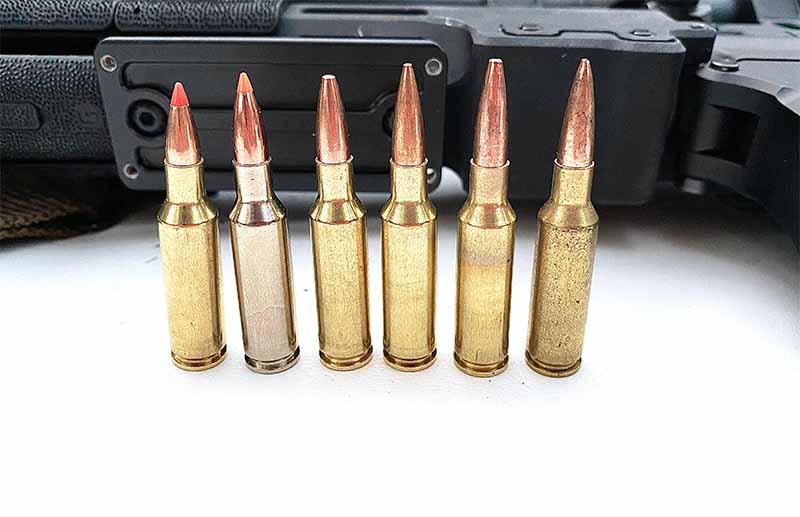
Carrying Fallen Warriors To Valhalla
The role of the Valkyrie in old Norse mythology was to monitor the battlefield, acting as something akin to the Fates; when a warrior fell honorably, they carried him to Valhalla, where he would feast with the heroes of all time for eternity.
Since the 6.8 SPC fell from general favor some years back, it has struggled to maintain popularity and relevance, and ammo has become increasingly hard to find. This isn’t to say that the round was a total failure; designs come and go, and sometimes it’s easier to improve what you have—in this case the 5.56mm—than it is to start over completely new. Convenience killed the 6.8 SPC on the commercial market, not lack of power or accuracy.
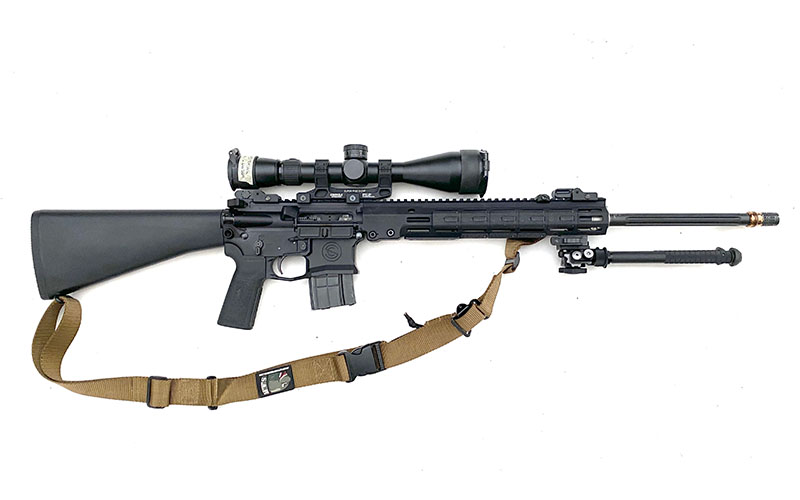
What the 6.8 SPC did well was introduce a set of internals and magazines that worked with the AR platform, essentially allowing for a new family of rounds designed around its larger case head and tapered body. Among these is the .224 Valkyrie, and Federal wisely chose the 6.8 SPC as the parent case. Not only does the .224 Valkyrie offer serious advantages over 5.56mm, it’s also an incredible, low-recoil alternative to 6.5 and 6 Creedmoor in long-range events.
Jack Of All Trades
The .224 Valkyrie has been around for a few years now, and it has been holding steady in popularity—though the current troubles have certainly put a damper on its growth. I really wanted to see what other writers were saying about this round, and what surprised me was that there seemed to be a general consensus that it was a great thing.

However, few, if any, writers have extrapolated on the true engineering marvel this round actually is. This is a round that’s capable of virtually anything. There are better rounds out there for individual tasks, but a person can easily accomplish 95 percent of all shooting tasks with this cartridge.
The first thing I want to address is that the .224 Valkyrie likely has the widest range of bullet weights available in a single bore: The lightest bullets weighing as little as 35 grains and the heaviest at 90 grains. That’s a range of weight almost triple the minimum value. A prairie dog hunter friend of mine with a custom bolt-action chose the .224 for this reason alone. He’s able to get insane speeds with 30-grain specialty copper alloy bullets, somewhere in the ballpark of 3,800 fps. (Factory loaded 60-grain Federal Predator & Varmint chronographs at 3,321 fps from my 22-inch rifle for reference. That’s double the bullet weight!) And yet, he’s still able to stick factory loaded 90-grain bullets in the same rifle for antelope. The versatility is extraordinary on the merit of bullet selection alone.

Recoil is another major factor with the .224 Valkyrie that’s not talked about much. This round, even with 90-grain bullets, has pretty much no recoil; it’s almost exactly the same as shooting 5.56mm. This might seem like a moot point, but for young hunters, people with shoulder injuries and those of use who don’t pretend to like recoil, it’s awesome.
The best part is that this low recoil comes with light rifle weight and extremely efficient ballistics. This round might very well be the ultimate learning cartridge for modern long-range sports. It’d even dominate in silhouette matches and offhand competition with its excellent energy on target. Shooting the Valkyrie with a suppressor is nothing but enjoyable; I can spot every impact and make immediate corrections. The gun barely moves and hardly makes a cough at the muzzle.
The ballistic matter is something that I find to be of great interest as well. Federal advertises the Valkyrie as having superior drop and drift at 1,000 yards over any other AR cartridge. After running the numbers and shooting the Valkyrie at these distances and beyond, I can prove the marketing to be true.
The 80.5 factory match load from Federal indeed shoots just like a 6.5 Creedmoor and, together with the newer 90-grain Sierra MatchKing load, delivers trajectories at a grand substantially flatter than any AR round I’ve ever tested. If you’re used to 5.56, you’ll probably consider it to be best at 600 yards, perhaps out to 800 shooting Black Hills 77-grain MK262.
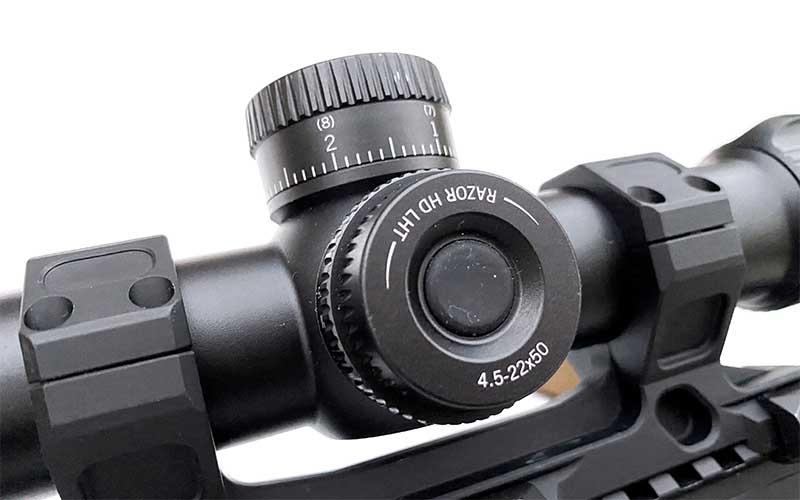
The Valkyrie, for equal recoil and rifle weight, is still supersonic at around 1,200 to 1,1400 yards and offers greater hit likelihood at virtually all ranges. I’m very impressed with this, having taken the advertisements with a grain of salt upon first reading them.
Too Small For Big Game?
For hunting, I’m on the fence with using the Valkyrie for big game. I’ve seen this round used on varmints and have been coyote hunting with it, but not on deer. Using a 90-grain Fusion load, I’d take a shot less than 200 yards, but I’m weary of the .22-inch bore in general—not the .224 Valkyrie as a cartridge.
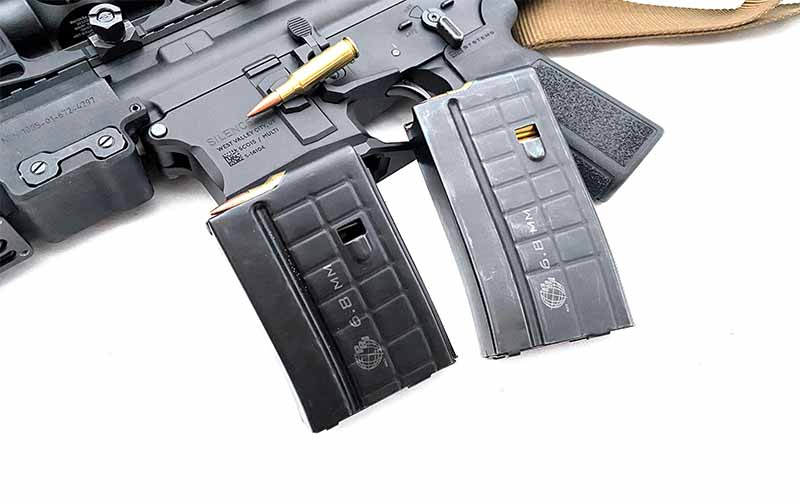
The Valkyrie may very well be the best small and medium game round on the market today, considering that it’s inherently accurate, has a very short learning curve due to low recoil and relatively inexpensive ammo. I’d hands-down consider this for all game 100 pounds and under at normal hunting distances, and most whitetails weigh well more than that.
In my years deer hunting, I’ve probably shot more of them than many people do in their lifetime. I have to be humble and honest about this …because I’ve also made more mistakes than most hunters ever do in their lifetime as a result. The biggest mistakes I’ve made have been centered on underestimating my game and overestimating my bullet. I have, for the most part, become a fan of big, heavy bullets in calibers that start with .45 inch and end with .45 inch. I like a Keith bullet, even in rifle rounds like 450 Bushmaster.
I’m of the impression now, having had trouble with lighter, faster bullets, that it’s nearly impossible to bring too much mass—regardless of speed. A 255-grain bullet at 900 fps has never failed to put a deer down for me, but I’ve certainly had an undeniable amount of trouble from small-bores at any speed, including rounds like 6.5 Creedmoor.

For me, the jury is out on the effectiveness on deer using the Valkyrie. Everything I’ve read from Federal on the round has been proven true, down to how close to their listed velocities are compared to my chronograph readings, so I’ve no doubt that it’d, in fact, perform well.
In perfect honesty, I’ll probably never take it out for deer. I’ve just not had a positive experience with small-bore rifles, in general, on these surprisingly tough and proud, yet common, animals. But with that said, the .224 Valkyrie has everything it takes to usurp the 5.56 NATO king.
Editor's Note: This article originally appeared in the January 2022 issue of Gun Digest the Magazine.
Raise Your Ammo IQ:
- Beyond The 6.5 Creedmoor: The Other 6.5 Cartridges
- The Lonesome Story Of The Long-Lost 8mm
- Why The .300 H&H Magnum Still Endures
- .350 Legend Vs .450 Bushmaster: Does One Win Out For Hunting?

Next Step: Get your FREE Printable Target Pack
Enhance your shooting precision with our 62 MOA Targets, perfect for rifles and handguns. Crafted in collaboration with Storm Tactical for accuracy and versatility.
Subscribe to the Gun Digest email newsletter and get your downloadable target pack sent straight to your inbox. Stay updated with the latest firearms info in the industry.

![Best Concealed Carry Guns In 2025 [Field Tested] Wilson Combat EDC X9S 1](https://gundigest.com/wp-content/uploads/Wilson-Combat-EDC-X9S-1-324x160.jpg)


![Best 9mm Carbine: Affordable PCCs [Tested] Ruger Carbine Shooting](https://gundigest.com/wp-content/uploads/Ruger-Carbine-Shooting-100x70.jpg)
![Best AR-15: Top Options Available Today [Field Tested] Harrington and Richardson PSA XM177E2 feature](https://gundigest.com/wp-content/uploads/Harrington-and-Richardson-PSA-XM177E2-feature-100x70.jpg)

A decent story exploring the .224 V.
While .223 remains dominant here over every other high velocity cartridge, the biggest drawback is 224V ammo availability. My local BassPro might carry it but the shelf is always empty. In addition, .224 V chambered rifles would only be possible in bolt guns as all AR15 platforms are illegal……have yet to see a bolt gun yet.
This is a ridiculous article. The .224 is not ideal for hunting deer, and is mainly suited for long range target enthusiasts. Proclaiming the 6.5 Grendel as dead and buried based on market share of ammo sales is also a stretch as it does have a substantial, and well-deserved following for hunting deer and other medium game due to its superior medium-range ballistics.
Horribly written article. Lots of the author’s ‘impressions’, but not enough meat to even begin to understand anything beyond the fact the author apparently never intended anything but a ‘fluff’ piece.